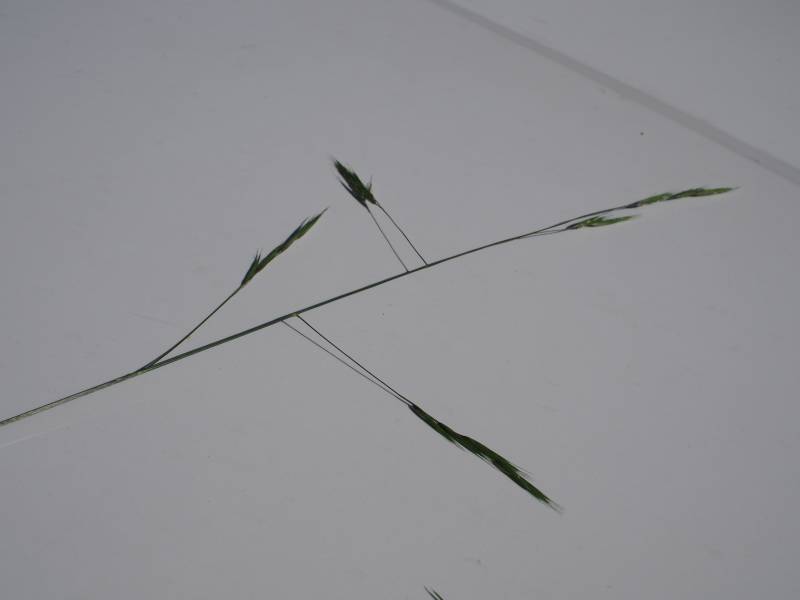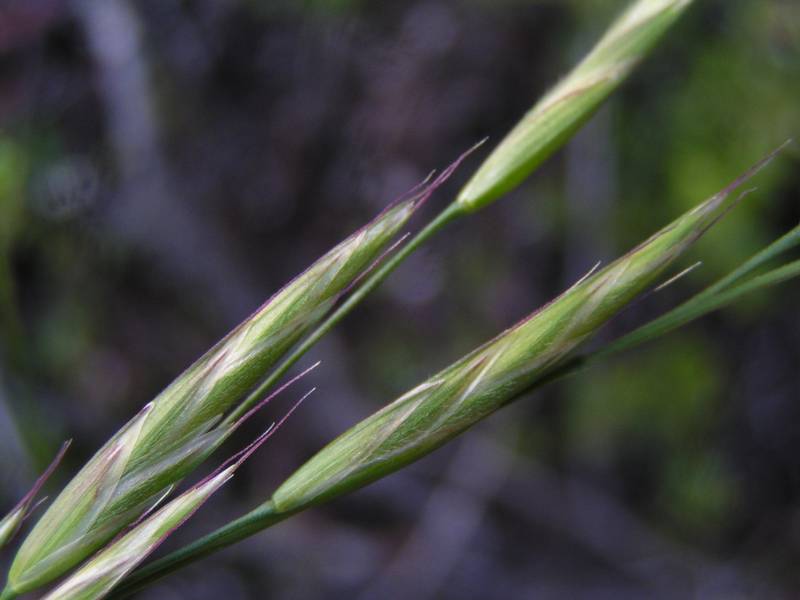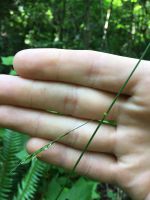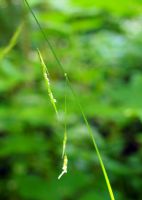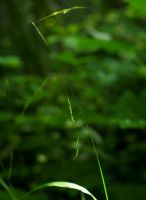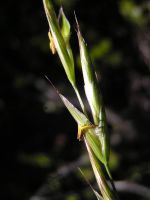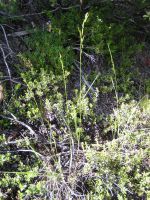Distribution: Occurring chiefly west of the Cascades crest in Washington; British Columbia to Oregon, east to Alberta, Montana, Wyoming and South Dakota; also in eastern Canada.
Habitat: Moist woods from the lowlands to middle elevations in the mountains.
Flowers: June-August
Origin: Native
Growth Duration: Perennial
Conservation Status: Not of concern
Pollination: Wind
Tufted perennial, the culms 6-13 dm. tall, not bulbous at the base.
Sheaths closed to the top, glabrous to pubescent; ligules 3-9 mm. long, truncate to obtuse, closed in front until split; blades flat, lax, 5-10 mm. broad, with prominent, wide-spaced nerves.
Inflorescence an open panicle 12-30 cm. long, the branches solitary, distant, drooping, bearing a few spikelets above mid-length; spikelets loosely 4- to 6-flowered; rachilla joints about 3 mm. long; glumes narrow, the first 5-6 mm. long, apparently 1-nerved, the second 8-9 mm. long, distinctly 3-nerved; lemmas strongly 7-nerved, about 10 mm. long, bifid at the apex for about 1 mm. with an awn 4-7 mm. long from between the teeth; paleas 2/3 as long as the lemmas; spikelets with 2-several perfect flowers, but the upper 2-4 flowers sterile, forming a spindle-like body about 5 mm. long.
Publication: Bull. Torrey Bot. Club 15: 294. 1888.
Bromelica smithii (Porter ex A. Gray) Farw.
PNW Herbaria: Specimen records of Melica smithii in the Consortium of Pacific Northwest Herbaria database
WA Flora Checklist: Melica smithii checklist entry
OregonFlora: Melica smithii information
E-Flora BC: Melica smithii atlas page
CalPhotos: Melica smithii photos

